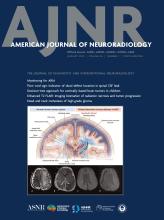This article requires a subscription to view the full text. If you have a subscription you may use the login form below to view the article. Access to this article can also be purchased.
Graphical Abstract
Abstract
BACKGROUND AND PURPOSE: Hemodynamic factors significantly influence the onset, progression, and rupture of intracranial aneurysms (IAs). Current rupture risk prediction scores focus primarily on the clinical, anatomic, and morphologic aspects. This study aimed to investigate the hemodynamic characteristics differences between ruptured and unruptured IAs.
MATERIALS AND METHODS: Conducted from July 2021 to July 2022, this prospective cohort study involved patients with ruptured and unruptured IAs undergoing DSA. Hemodynamic characteristics were assessed by using the AneurysmFlow tool. Hemodynamic, clinical, anatomic, and morphologic parameters were compared between ruptured and unruptured IA groups.
RESULTS: The study included 127 patients with 135 aneurysms (67 ruptured, 68 unruptured). Complex flow patterns (type 3 and 4) were observed more frequently in ruptured aneurysms compared with unruptured aneurysms (OR, 5.57; 95% CI, 2.49–12.45; P < .001) in univariate analysis, and were also more common in unruptured aneurysms associated with daughter sac features (P = .015). The mean aneurysm flow amplitude (MAFA) was lower in ruptured aneurysms, and associated with lower flow velocity in the parent artery related to vasospasm. MAFA in the aneurysmal dome or any additional daughter sacs was lowest compared with other regions inside the aneurysms. The technical failure rate of AneurysmFlow measurements was 8.5% (12 of 139 patients). Additionally, hypertension (OR, 0.42; 95% CI, 0.30–0.54; P < .001), bifurcation location (anterior communicating artery/anterior cerebral artery/MCA/posterior communicating artery/posterior circulation) (OR, 0.17; 95% CI, 0.05–0.29; P = .005), and irregular shape (OR, 0.19; 95% CI, 0.05–0.35; P = .012) were identified as independently associated with rupture.
CONCLUSIONS: Complex flow patterns identified on the AneurysmFlow tool are significantly more common in ruptured and unruptured aneurysms associated with daughter sac features. The lowest MAFA in the aneurysmal dome and daughter sacs likely indicates specific pathophysiologic changes within the aneurysm wall associated with rupture incidence. Hypertension, bifurcation location, and an irregular shape are independently associated with the risk of rupture. Further multicenter studies with larger sample sizes are needed to validate these findings.
ABBREVIATIONS:
- ACA
- anterior cerebral artery
- AcomA
- anterior communicating artery
- CFD
- computational fluid dynamics
- IA
- intracranial aneurysm
- MAFA
- mean aneurysm flow amplitude
- PcomA
- posterior communicating artery
- © 2025 by American Journal of Neuroradiology













